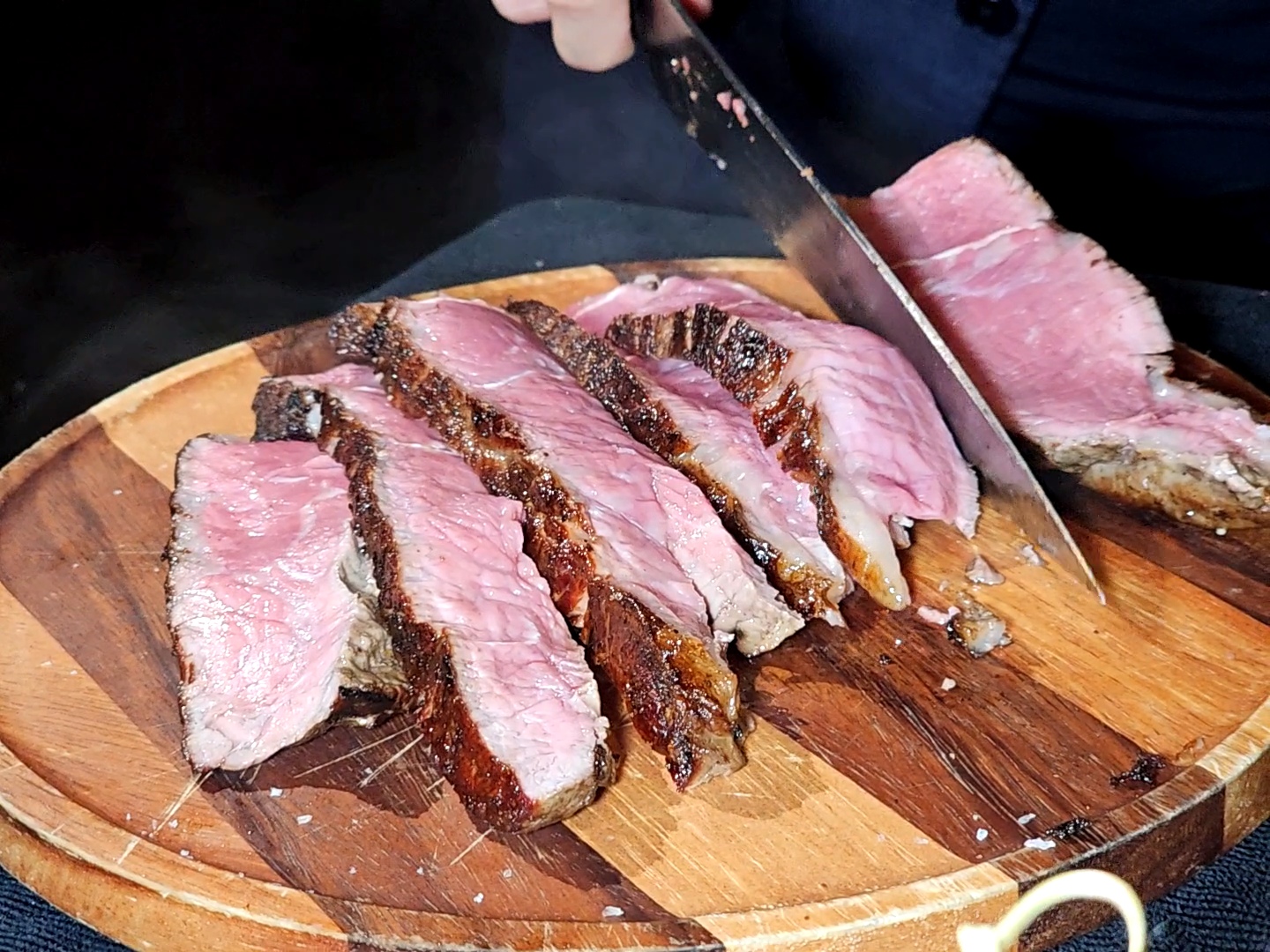When it comes to cooking a steak to perfection, there are numerous factors to consider. Among them, the thickness of the beef cut often goes unnoticed. However, this seemingly trivial aspect plays a significant role in determining the final outcome of your culinary masterpiece.
Striking the perfect balance between a juicy pink core and a crisp sear on the exterior requires careful attention to the thickness of the cut. In this blog post, we will delve into the reasons why the thickness of a beef cut matters and explore various cooking techniques that benefit from a slightly thicker cut.
Another critical factor, of course, is the beef you chose. While great options are available in the United States, with the return of boneless Argentine Beef to the country, you now have one of the most sought-after beef in the world.
The Art of the Sear-To-Pink Ratio:
The thickness of a beef cut directly affects the sear-to-pink ratio, which is crucial in achieving a steak cooked to perfection. A slightly thicker cut allows for a more balanced heat distribution during cooking, resulting in a beautifully seared exterior while maintaining a tender, pink center. This balance is often sought by culinary enthusiasts who desire a juicy and flavorful steak.
Grilling: Harnessing the Power of Thickness:
Grilling is a popular method for cooking steaks, and the thickness of the cut can make a notable difference in the final result. Thicker cuts tend to fare better on the grill as they allow for more control over the cooking time and temperature. The extra thickness helps achieve the ideal sear on the outside while ensuring that the inside cooks evenly and retains its succulent juiciness. A thicker steak can handle the intense heat of the grill, resulting in a delightful combination of a charred crust and a perfect pink center.
Cast-Iron Skillet: Embracing the Versatility:
A cast-iron skillet provides a versatile cooking surface, and a slightly thicker beef cut is advantageous when using this method. The thicker cut allows for better heat distribution and retention, ensuring that the steak cooks uniformly. The thicker cut absorbs the heat evenly by starting the cooking process on the stovetop and finishing it in the oven, resulting in a mouthwatering sear on the outside and a tender, pink interior. This technique allows for greater control over the cooking process, enabling you to achieve the desired level of doneness with precision.
Oven-to-Grill Method: Mastering Reverse Searing:
The oven-to-grill method, often referred to as reverse searing, has gained popularity among steak enthusiasts. This technique involves cooking the steak in the oven at a low temperature until it reaches the desired internal temperature and then finishing it with a quick sear on a hot grill. A slightly thicker cut is particularly suitable for this method as it allows for better control over the initial cooking phase in the oven. The thicker steak retains moisture and tenderness during the slow cooking process, resulting in a more evenly cooked steak with a rich, pink center. The final sear on the grill adds a delightful crust, providing a contrast of textures and flavors.
Conclusion:
While it may be tempting to overlook the thickness of a beef cut when preparing a steak, doing so would be a disservice to the culinary masterpiece you aim to create. Striking the perfect balance between a juicy pink core and a crisp sear on the exterior is an art that can be mastered with attention to detail, and thickness plays a significant role in this process. As mentioned before, you can make your dining experience even more delicious by choosing the world-famous Argentine Beef. Whether you decide to grill, use a cast-iron skillet, or employ the oven-to-grill method, a slightly thicker cut can give you greater control over the cooking process and a more satisfying dining experience. So, next time you're at the butcher counter or preparing to cook a steak, remember that thickness matters—it's the secret ingredient to achieving culinary perfection.

